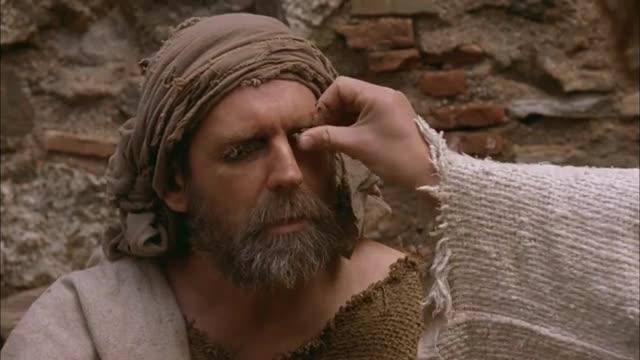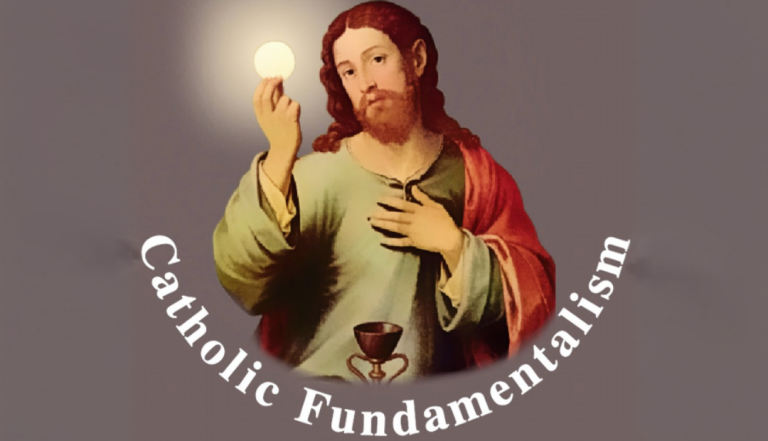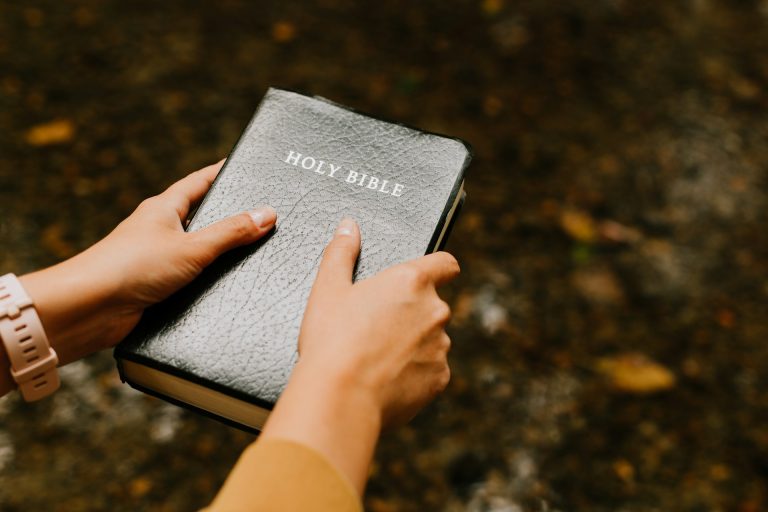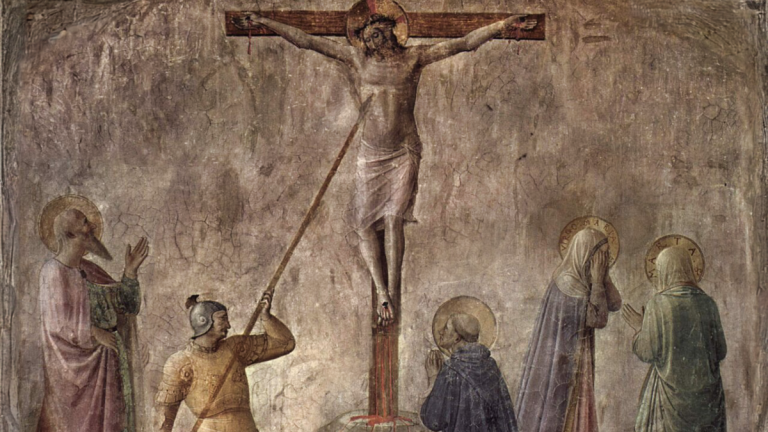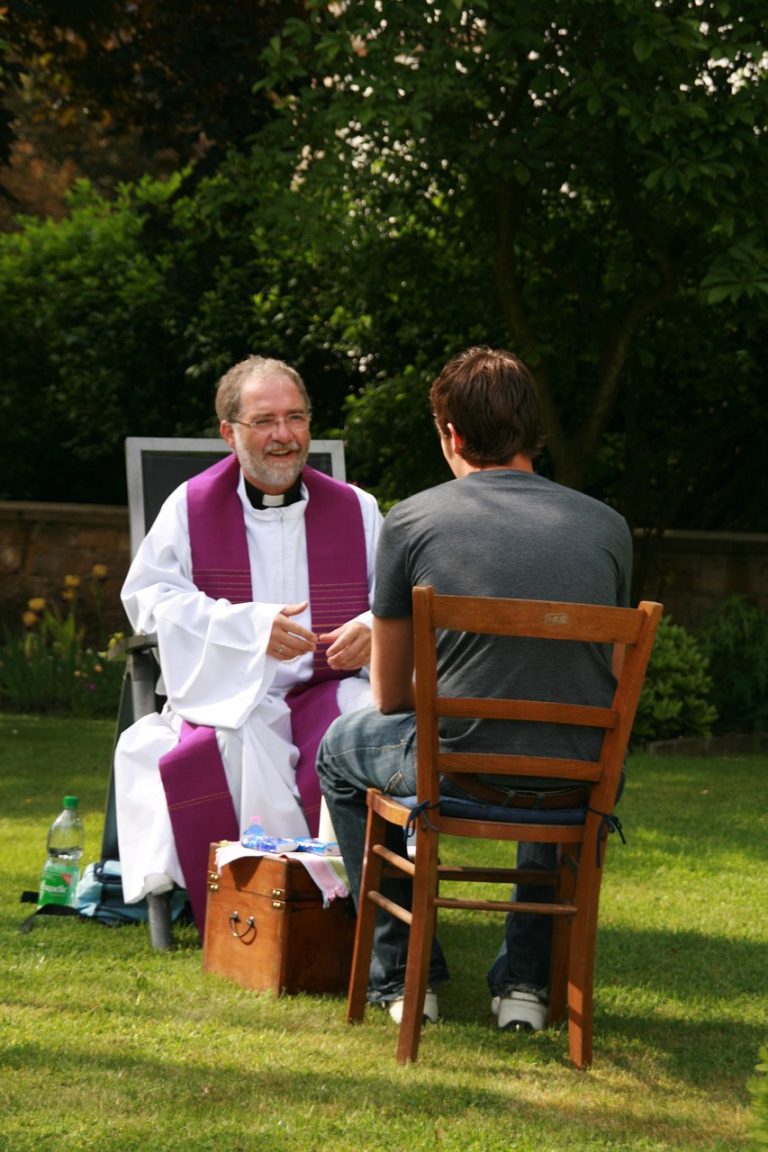Question 1: “Who replaced Judas to give Jesus Twelve Cardinal-Bishops?”
Answer: “Jesus chose His smartest, deadliest enemy, Saul of Tarsus. Act 9:120 explains: ‘Saul, still breathing murderous threats against the disciples of the Lord,
went to the high priest and asked him for letters to the synagogues in Damascus, that,
if he should find any men or women who belonged to the Way, he might bring them back to Jerusalem in chains.'”
~
Question 2: “What made Saul become ‘Paul’ and begin to defend The First Catholics in The One, Holy, Catholic, and Apostolic Church Jesus Spoke Into Being with His Church-Creating Word: ‘And I say unto you thou art Peter and on this rock I build My Church and the gates of hell shall not prevail against it. I give you the keys to The Kingdom of Heaven.’?
~
Answer: “Jesus let him ‘see the light’ of His Overwhelming Truth! ‘On his journey, as he was nearing Damascus, a light from the sky suddenly flashed around him. He fell to the ground and heard a voice saying to him, ‘Saul, Saul, why are you persecuting me?'”
~
Question 3: “What did Saul say?”
Answer: “He asked The Question that billions of people would want answered: ‘He said, “Who are You, sir?'”
~
Question 4: “Who answered his question?”
Answer: “Jesus! ‘The reply came, ‘I am Jesus, Whom you are persecuting. Now get up and go into the city and you will be told what you must do.'”
~
Question 5: “Did anyone else see Jesus?”
Answer: “‘The men who were traveling with him stood speechless, for they heard the voice but could see no one. Saul got up from the ground, but when he opened his eyes he could see nothing; so they led him by the hand and brought him to Damascus. For three days he was unable to see, and he neither ate nor drank.'”
~
Question 6: “Were those who had become Catholic in Damascus worried that Paul would imprison them?”
Answer: “‘There was a disciple in Damascus named Ananias, and the Lord said to him in a vision, ‘Ananias.’ He answered, ‘Here I am, Lord.’ The Lord said to him, ‘Get up and go to the street called Straight (The name of that Street may have been Chosen by God!) and ask at the house of Judas for a man from Tarsus named Saul. He is there praying, and in a vision he has seen a man named Ananias come in and lay his hands on him, that he may regain his sight.'”
Question 7: “Did Ananias want to work with Saul?”
Answer: “No! ‘But Ananias replied, ‘Lord, I have heard from many sources about this man, what evil things he has done to your holy ones in Jerusalem. And here he has authority from the chief priests to imprison all who call upon your name.'”
~
Question 8: “What did God tell Ananias?”
Answer: “‘But the Lord said to him, ‘Go, for this man is a chosen instrument of Mine to carry My Name before Gentiles, kings, and children of Israel, and I will show him what he will have to suffer for my name.’ So Ananias went and entered the house; laying his hands on him, he said, ‘Saul, my brother, The Lord has sent me, Jesus Who appeared to you on the way by which you came, that you may regain your sight and be filled with The Holy Spirit.'”
~
Question 9: “Did God cure Saul?”
Answer: “‘Immediately things like scales fell from his eyes (Those ‘scales’ included the photon-sized blockages of self-righteousness in his mind that kept his brain from seeing Jesus.) and he regained his sight. He got up and was Baptized, and when he had eaten, he recovered his strength.
He stayed some days with the disciples in Damascus, and he began at once to proclaim Jesus in the synagogues, that he is the Son of God.’
May we all follow Jesus’s command to His Church as quickly and well as St. Paul did!”
~
After Saul was Baptized, he became known as “Paul”. Peter and the other Catholic Cardinal-Bishops Ordained him as one of the Catholic Cardinal-Bishops who formed Catholic Dioceses and Ordained Catholic priests and Bishops in entire nations between India and Ireland.
~
Question 10: “How did The Jerusalem Establishment react to Jesus’ Call to Catholic Communion?
Answer: “After The First Catholics learned from Today’s Gospel Reading (John 6: 52-59) that those Catholic Cardinal-Bishops could Ordain Christ’s Catholic priests with The Power to Preside over The Miracle of Transubstantiation at Every Catholic Mass, many rejected it:
“The Jews quarreled among themselves, saying ‘How can this man give us his Flesh to eat?’
Jesus said to them, ‘Amen, amen, I say to you, unless you eat the Flesh of the Son of Man and drink his Blood, you do not have life within you. Whoever eats my Flesh and drinks my Blood has eternal life, and I will raise him on the last day. For my Flesh is true food, and my Blood is true drink.
Then, Jesus specifically told us why we should embrace The Call to Catholic Communion that Catholics pray everyone will be blessed to obey gratefully!
“Whoever eats my Flesh and drinks my Blood remains in Me and I in him.
Just as the living Father sent Me and I have life because of The Father, so also the one who feeds on Me will have life because of Me.
This is the bread that came down from heaven. Unlike your ancestors who ate and still died, whoever eats this bread will live forever.”
These things He said while teaching in the synagogue in Capernaum.”
May all be blessed to realize: “Jesus knows more than I do about THAT!”
~
. . . . . . . . . . . .
catholicfundamentalism.com is “Simple Reasons to be Catholic”. Many enjoy the Daily Columns, writings, and books.
The best book of the last Century is “The Diary of St. Faustina”. It lets each of us realize how much Jesus loves our soul.
http://www.seraphim.my/divinemercy/diary/text/DiaryI.htm
Our Free Books are so much less than “The Diary of St. Faustina” that they are anonymous. Some find that our newest Free Book is interesting:
https://catholicfundamentalism.com/wp-content/uploads/2024/03/Saint-James-the-Less-Is-More.pdf

